A New Global Health Threat Looms
As the world grapples with a post-pandemic reality, a new public health threat has emerged: Mpox, commonly known as monkeypox. With over 100,000 confirmed cases and 220 deaths reported across 120 countries since January 2022, the disease has become a global concern. India is not immune to this rising threat, and the government is taking proactive steps to ensure the country is prepared. But with memories of the COVID-19 pandemic still fresh in everyone’s mind, how does the nation plan to manage the Mpox outbreak without creating unnecessary panic?
In this article, we explore the Indian government’s response, the critical role of public health preparedness, and why it’s essential to strike a balance between vigilance and calm.
The Indian Government’s Approach: Screening, Isolation, and Testing
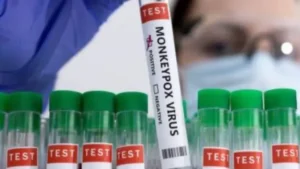
India’s response to the Mpox outbreak has been swift and strategic, focusing on containing the spread of the virus through rigorous screening, isolation, and testing protocols. The Middle has issued an advisory that emphasizes the importance of detecting potential cases early and isolating them to prevent further transmission. But the government’s plans go beyond just identifying patients — they are looking at a holistic strategy to keep the country safe.
Screening: Early Detection Is Key
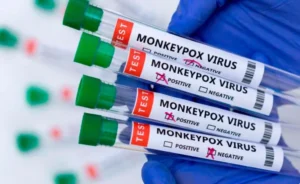
The advisory issued by the Health Ministry stresses that all suspected Mpox cases must undergo screening to identify symptoms early. Mpox, like other viral infections, begins with common symptoms such as fever, muscle aches, and fatigue, followed by a distinct rash that often appears on the face, genitals, or other parts of the body. Recognizing these symptoms early is crucial in curbing the spread of the virus.
Healthcare workers, especially those in skin and sexually transmitted disease (STD) clinics, are being trained to differentiate Mpox symptoms from other similar conditions. This ensures that potential cases are caught as early as possible, preventing the virus from spreading undetected.
Isolation: Containment Begins at the Source
Isolation is one of the most effective ways to contain viral outbreaks. The government has instructed states and union territories to identify hospitals equipped to handle Mpox cases, where patients can be isolated and treated. These isolation facilities are essential not only for preventing the spread of the virus but also for ensuring that infected individuals receive the care they need.
To further prevent transmission, the government has urged healthcare facilities to adopt strict infection prevention and control practices. These measures echo the guidelines implemented during the height of the COVID-19 pandemic, where isolation and quarantine played a significant role in reducing the number of infections.
Testing: A Critical Component
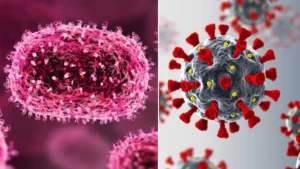
Testing is another pillar of India’s Mpox strategy. The Health Ministry has provided a list of operational laboratories capable of conducting Mpox tests. Quick and accurate diagnosis is vital for confirming suspected cases and allowing for timely intervention. By enhancing testing capabilities across the country, the government aims to stay ahead of the virus’ spread and ensure that confirmed cases are isolated and treated as quickly as possible.
Contact Tracing: Lessons Learned from the COVID-19 Pandemic
One of the most critical strategies during the COVID-19 pandemic was contact tracing, and India is applying those lessons to its response to Mpox. The government’s advisory highlights the importance of contact tracing in managing the spread of the virus. As with COVID-19, identifying and monitoring the people who have come into contact with confirmed Mpox cases is crucial in breaking the chain of transmission.
Tracking Every Contact
Mpox spreads primarily through close contact with an infected individual, making it essential to trace everyone a patient may have come into contact with. This process involves identifying anyone who may have been exposed to the virus and monitoring them for symptoms during the incubation period. If symptoms develop, these individuals can be tested, isolated, and treated, preventing further spread.
The government has also encouraged states and districts to adopt a comprehensive surveillance strategy, similar to the one used during the COVID-19 pandemic. This includes leveraging digital tools to track suspected and confirmed cases, allowing for real-time data analysis and quicker decision-making.
Also Read:https://newsreporto.com/nutrition-essentials-for-every-age-from-toddlers-to-seniors/
Minimizing Risk Without Creating Panic
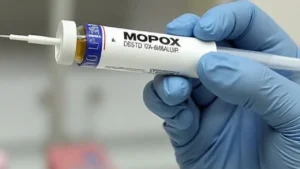
The Ministry of Health has emphasized the importance of managing public perception to avoid undue panic. While Mpox is a serious health threat, creating mass fear could have devastating economic and social consequences. The government aims to strike a balance by ensuring that the public is well-informed about the risks without generating unnecessary anxiety.
Public communication strategies include educating people on the symptoms of Mpox, how it spreads, and what steps can be taken to protect themselves. By providing clear, accurate information, the government hopes to empower individuals to take preventive measures without causing widespread alarm.
Hospitals on High Alert: Preparedness at the Facility Level
One of the key components of India’s response to Mpox is ensuring that healthcare facilities are prepared to handle potential outbreaks. The government has instructed hospitals to review their public health preparedness and ensure that they have adequate isolation facilities, trained staff, and resources to manage Mpox cases.
Isolation Facilities: A Necessity in Preventing Spread
Isolation is not just about keeping infected individuals away from others; it’s about providing a safe, controlled environment where they can receive the care they need without putting others at risk. Hospitals across the country are being asked to designate isolation wards specifically for Mpox patients. These wards will be equipped with the necessary medical equipment, supplies, and protocols to ensure that the virus does not spread within the facility.
Training Healthcare Workers
Healthcare workers are on the front lines of the fight against Mpox, and their training is paramount. The advisory emphasizes the need to brief doctors, nurses, and other medical staff on Mpox symptoms, differential diagnoses, and the appropriate actions to take when a case is detected. This not only helps in diagnosing the disease early but also ensures that healthcare workers themselves are protected from infection.
Mpox and Its Symptoms: What the Public Needs to Know

Public awareness is a cornerstone of any effective disease management strategy. To combat Mpox, the government has turned to the World Health Organization (WHO) for the latest information on the virus. According to the WHO, the majority of Mpox patients are men between the ages of 18 and 44, with rash and fever being the most common symptoms.
Recognizing Symptoms Early
Mpox often begins with flu-like symptoms, including fever, chills, and body aches, followed by the development of a rash that may spread to various parts of the body. The rash can be painful and may cause complications if not treated promptly. Unlike other viruses, Mpox can be spread through both respiratory droplets and direct contact with lesions, making it essential to recognize the signs early.
Who Is Most at Risk?
While Mpox has traditionally been endemic to certain parts of Africa, the recent global outbreak has shown that the virus can spread beyond these regions. The WHO has also warned of new strains emerging from the Democratic Republic of Congo, which could further complicate efforts to contain the virus. Vulnerable populations, including those with weakened immune systems, are at higher risk of severe outcomes if infected.
International Concern: Mpox Declared a Public Health Emergency
In July, the WHO declared Mpox a Public Health Emergency of International Concern (PHEIC), signaling the severity of the global outbreak. This designation calls for a coordinated international response, as countries worldwide grapple with the spread of the virus.
Global Response: A Collaborative Effort
The PHEIC declaration urges countries to ramp up their preparedness, with an emphasis on international collaboration to curb the spread of Mpox. Governments are encouraged to share data, research, and resources, as well as coordinate on travel advisories and quarantine measures for affected regions.
Learning from COVID-19
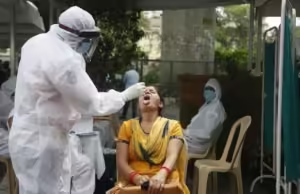
The Mpox outbreak has underscored the importance of global cooperation in managing infectious diseases. The international community is applying the lessons learned during the COVID-19 pandemic to develop effective strategies for controlling the virus. This includes faster testing, increased vaccine production, and improved public health infrastructure.
Vigilance Without Panic – The Key to India’s Mpox Response
As Mpox continues to spread globally, India’s approach remains one of vigilance, preparation, and calm. By emphasizing early detection, isolation, and contact tracing, the government aims to protect its population while avoiding the fear and uncertainty that defined the early days of the COVID-19 pandemic. With hospitals on high alert and the public informed, India is well-positioned to manage this new threat.
While Mpox poses a real danger, India’s response highlights the importance of balancing preparedness with public confidence. Through careful planning and clear communication, the country aims to prevent a widespread outbreak while maintaining calm among its citizens.

